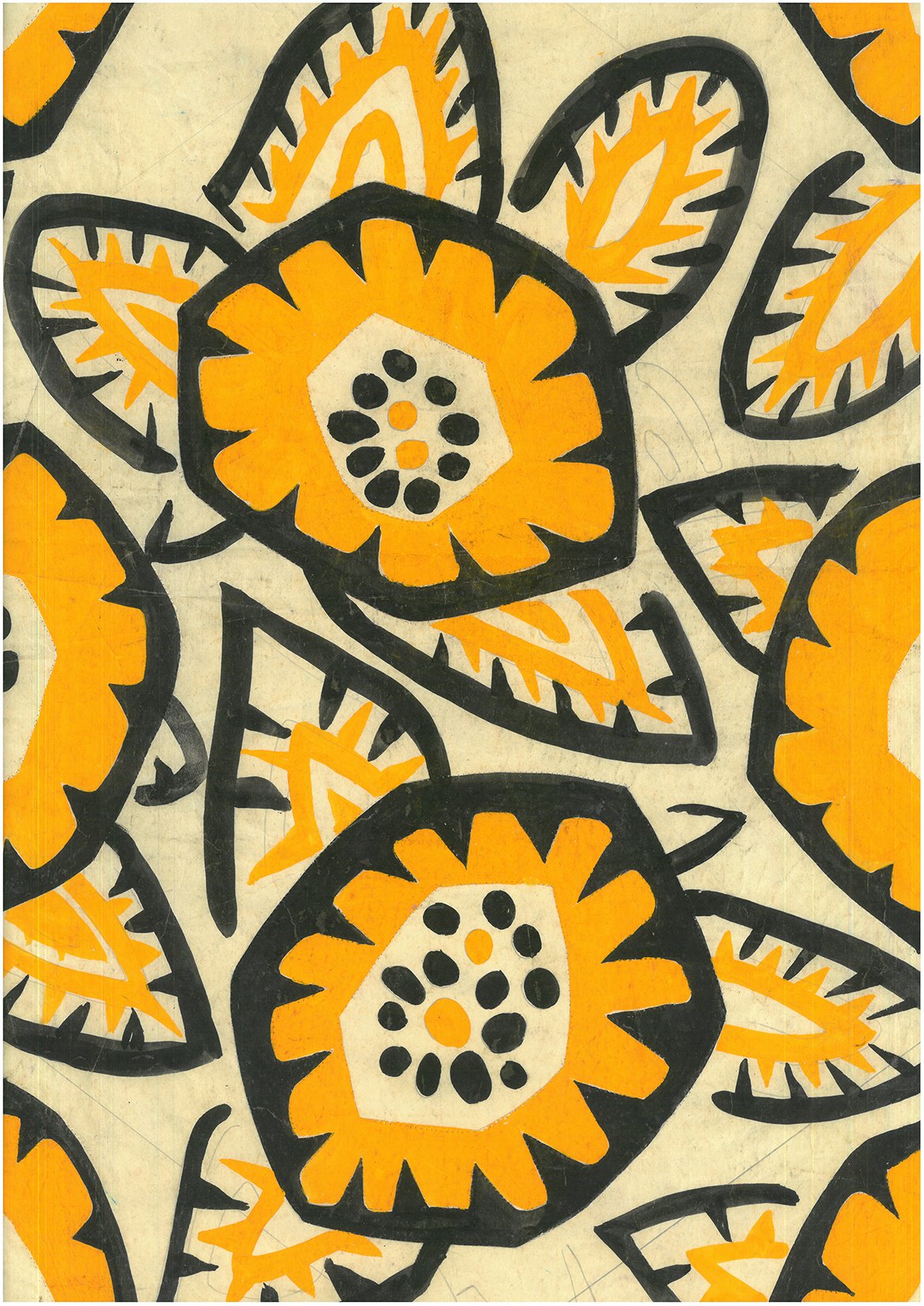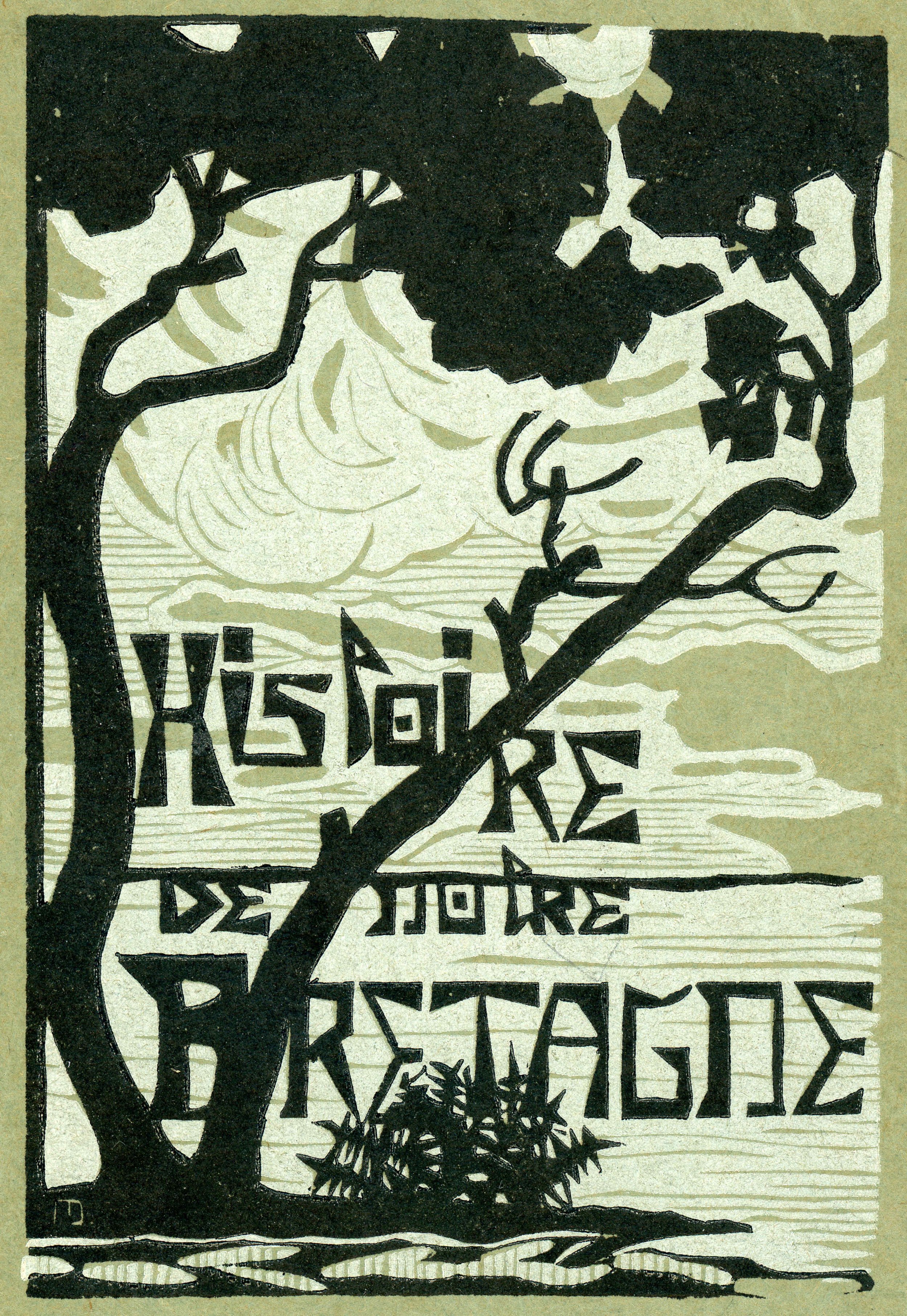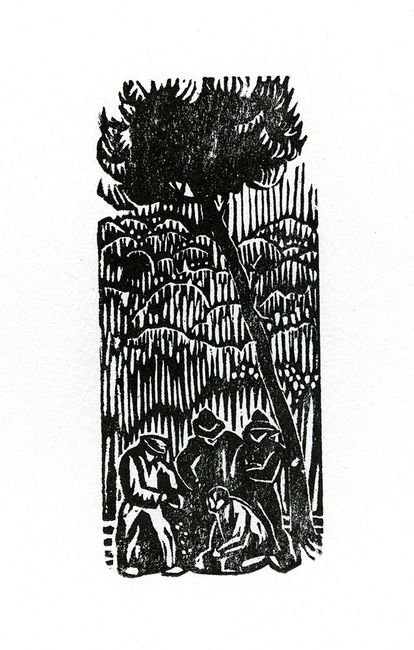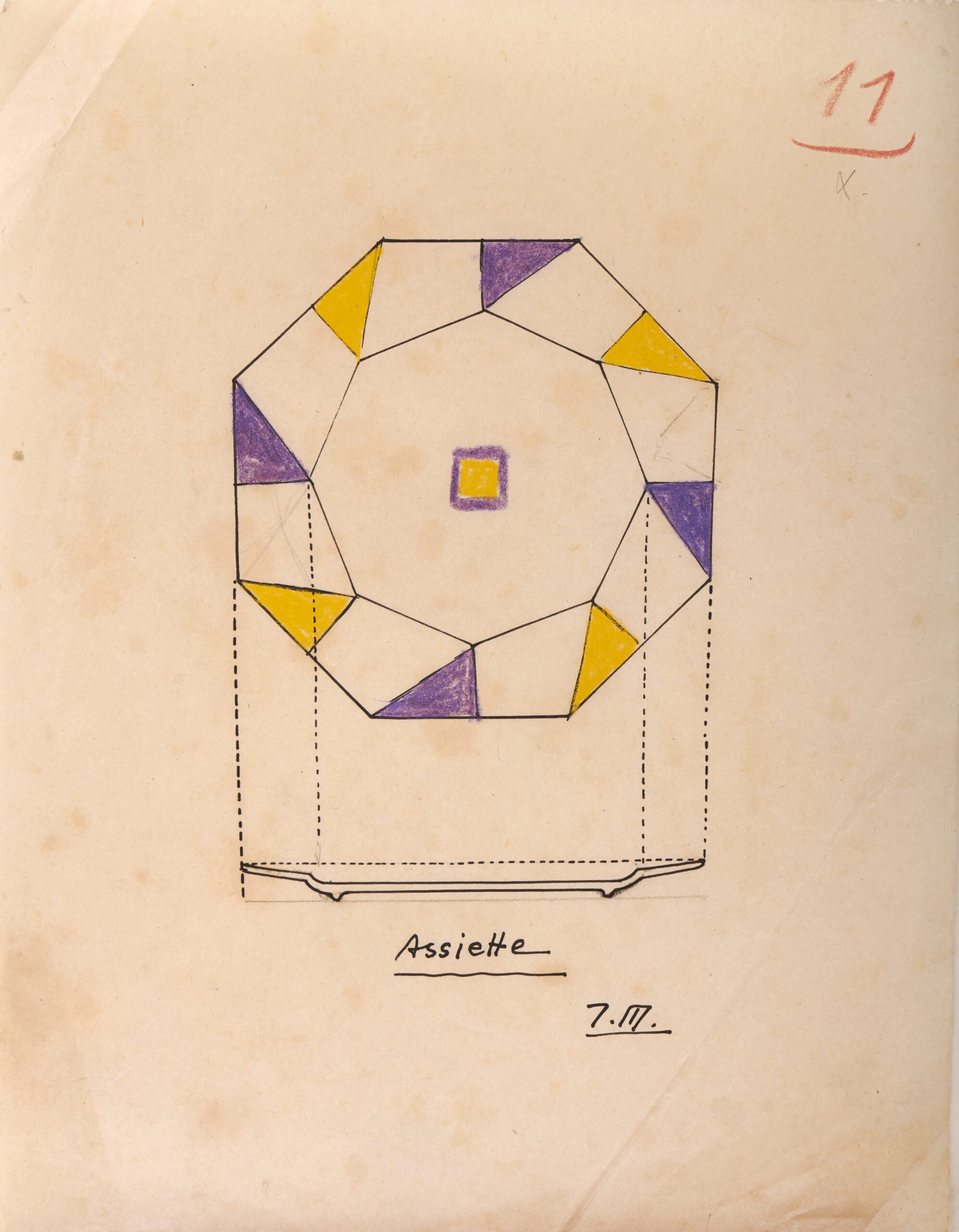JEANNE MALIVEL
Textile design by Jeanne Malivel, c.1921-24
Jeanne Malivel (1895-1926) was a pioneer of modern Breton art and design. During her short life she produced a remarkable body of work spanning woodblock printing, painting, textiles, ceramics and furniture design. Blending eclectic influences from Art Deco to Celtic folklore, she was committed to the renewal of the decorative arts.
Born in Brittany into an affluent, bohemian family, Jeanne was encouraged by her parents to freely explore her creativity. They arranged for her to study painting at the Académie Julian in Paris - one of only two art schools accepting female students at the time. Although the First World War shortly brought her home from Paris, she didn’t abandon her art practice - volunteering as a wartime nurse, she filled one sketchbook after another with tender portraits of the wounded soldiers in her care.
Jeanne (centre) and female friends at their studio in Montparnasse, c.1920
Returning to Paris in 1918, Malivel enrolled in the prestigious École des Beaux Arts. But she found the school’s academic rigidity didn’t suit her; learning instead from the city itself, frequenting its many museums and mingling with movers and shakers of the Paris art scene. Paris was positively fizzing with new ideas in decorative art and design at this time; being immersed in this scene would have a huge impact on Malivel’s aesthetic vision.
Still yearning for her homeland, Malivel returned to Brittany in 1922, setting up a studio in her parents’ home. It’s here that she honed the art of wood engraving, carving blocks from a pear tree in the family garden using a surgical scalpel saved from her time as a nurse. Trees, religious iconography and saints from Breton folklore all become recurring motifs in her prints. Compositionally you can see the influence of traditional Japanese woodblock landscapes, but the chunky, angular shapes are distinctly Modern. Perhaps her most well known work was a series of woodblock illustrations for the book The History of our Brittany by Jeanne Coroller-Danio, published in 1922.
Left: Cover of ‘The History of our Brittany’, woodblock print, 1922. Right: Four men under a tree, woodblock print, c.1922
A primary influence on Malivel was the British Arts and Crafts movement, which sought to elevate the status of the domestic and decorative arts. Adopting their adage “beautiful and useful”, she applied herself to designing all elements of the everyday interior, from cabinets to cutlery, glassware to textiles. It was important to her to work with local craftspeople to bring her visions to life. There is a pared back elegance to her furniture pieces, in which Art Deco motifs like radiating sunbeams are carved in oak. Particularly striking is the Octagonal ceramic dinnerware set she designed in 1923, a piece that would have looked astonishingly modern on the average dining table (and wouldn’t look out of place on today’s high street, don’t you think?).
Left: Octagonal earthenware plate, manufactured by Henriot, 1923. Right: Ink and pastel design on paper for Octagonal ceramic plate, c.1923
Oak chair and footstool. Image © Musée de Bretagne
Furniture designs for Salle de l’Osté, 1925
In 1923 Malivel, together with artists Suzanne and René-Yves Creston and architect James Bouillé, founded the art movement Seiz Breur - the aim of which was to promote Breton cultural identity through modern applied arts. Meaning ‘seven brothers’ in the Breton language, the name was derived from an intriguing folk story that Jeanne’s grandmother used to read to her as a child.
In 1925 the group devised interiors for the Breton Pavilion for the Exposition Internationale des Arts Decoratifs et Industriels Modernes in Paris. The main room, Salle de l’Osté, was the perfect conduit for Malivel’s creative vision - she designed fabrics, ceramics and wooden furniture for the interior, whilst other group members produced wall hangings, utensils and glassware. At its height (after Jeanne’s death) there were 50 artists and designers united by the Seiz Breur movement, but regrettably the group became subject to controversy, with a handful of its members sympathising with emerging Nazi ideology.
Tragically, Malivel succumbed to paratyphoid fever in 1926, just one year after marrying her husband Maurice Yung. Although her family sought to celebrate her work in a retrospective book published in 1929, her premature death hindered true recognition. Jeanne Malivel’s output is uniquely of her time and place - with one foot in Paris and one in Brittany, she synthesised modernity and tradition, decoration and radical design reform.
Block printed invitation to Seiz Breur pavilion at the Paris Exposition, 1925
Block printed fabric by Jeanne Malivel, 1924.











